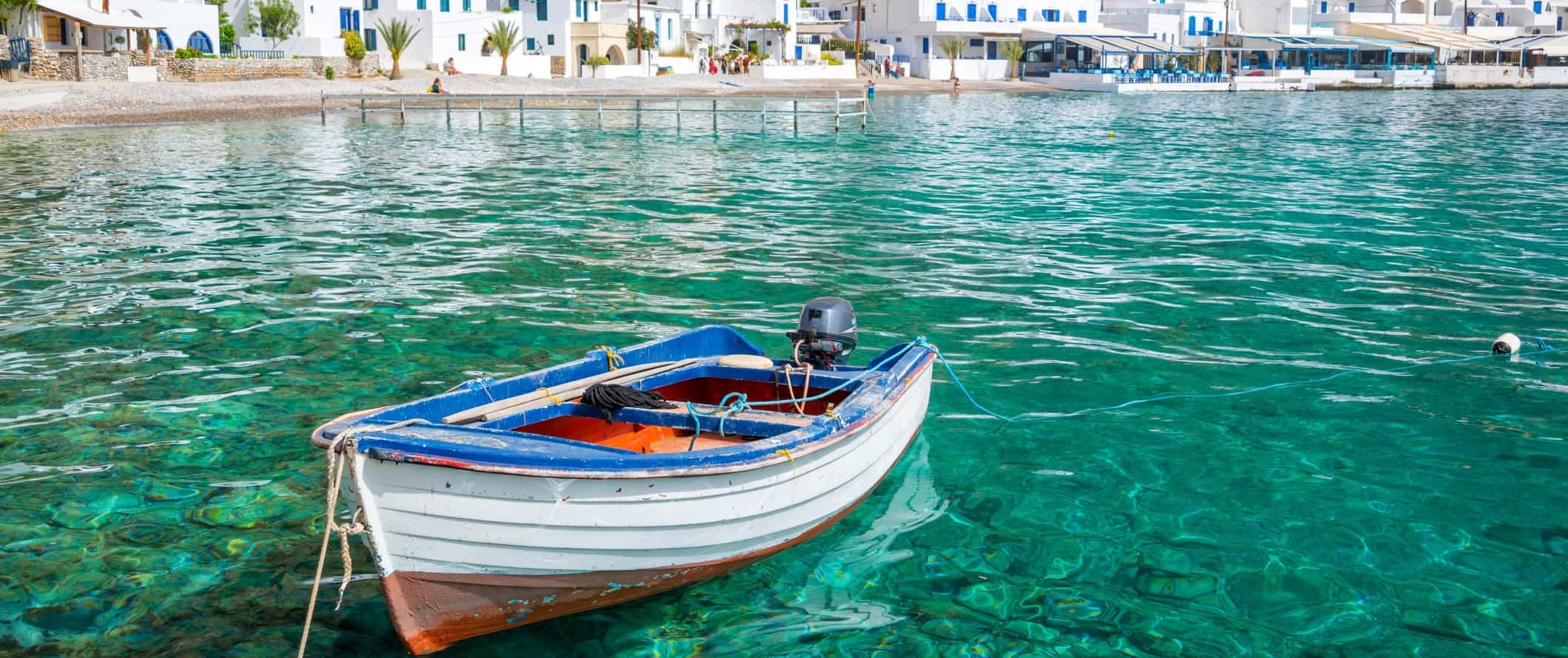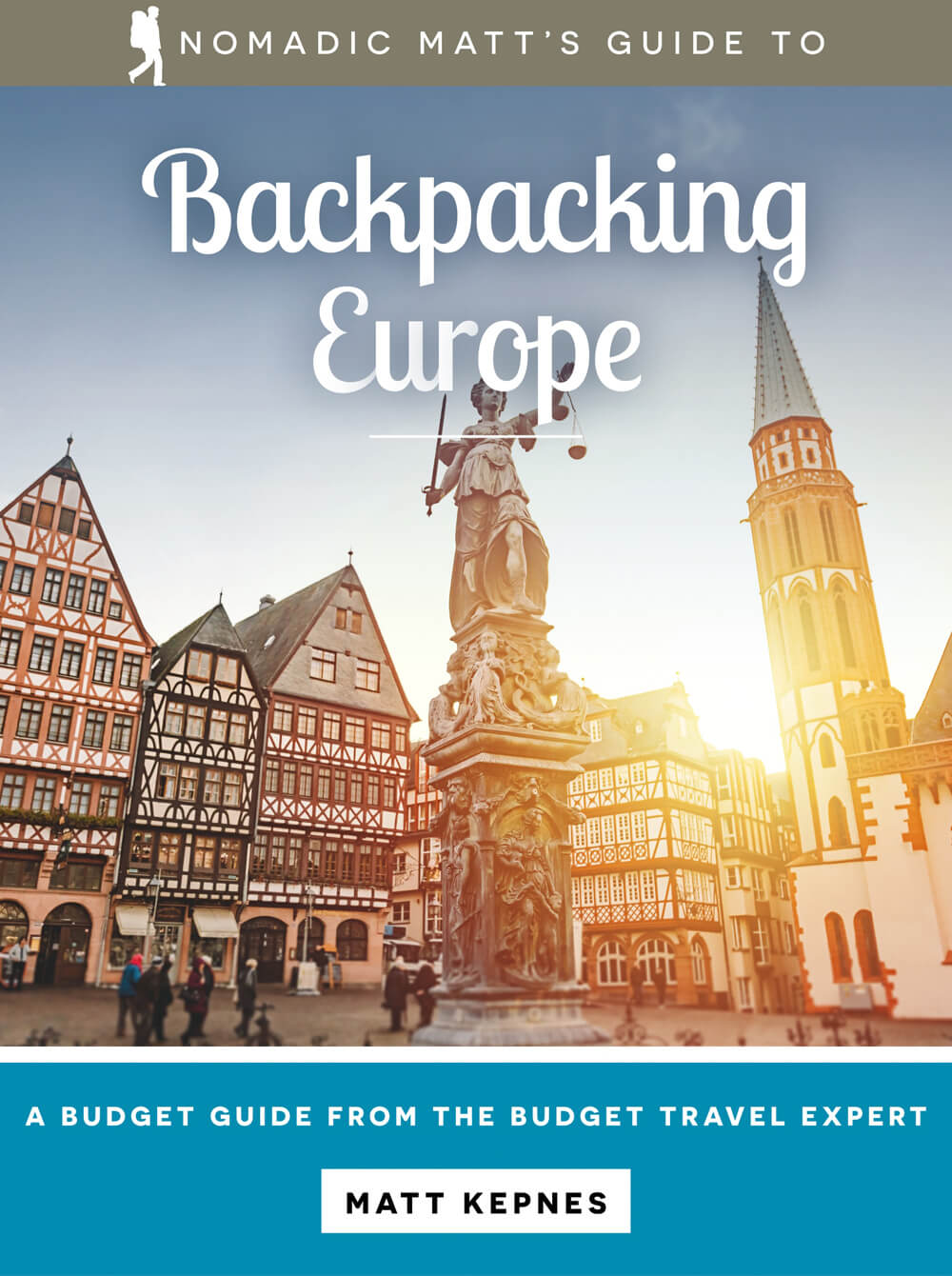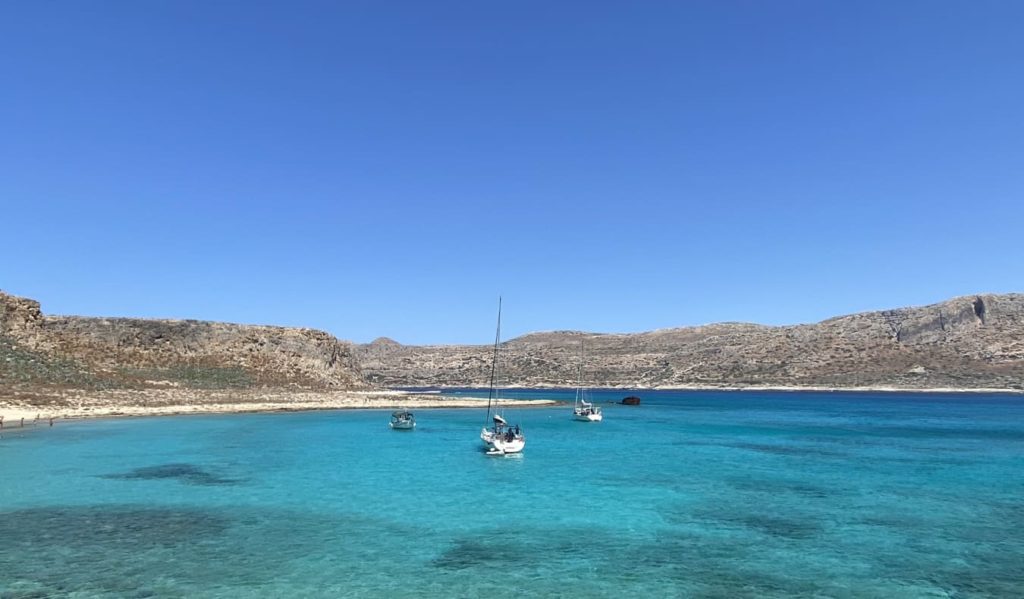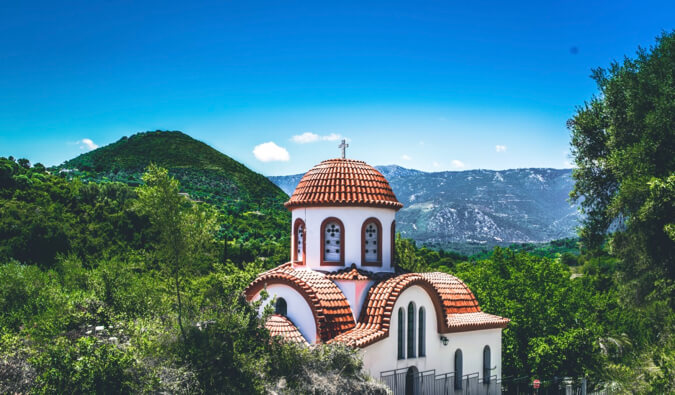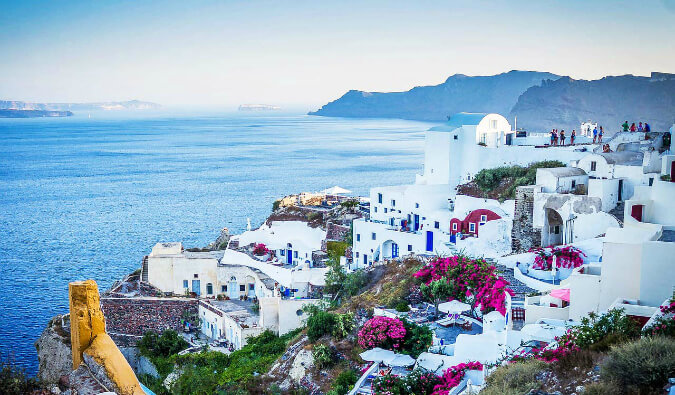Crete Travel Guide
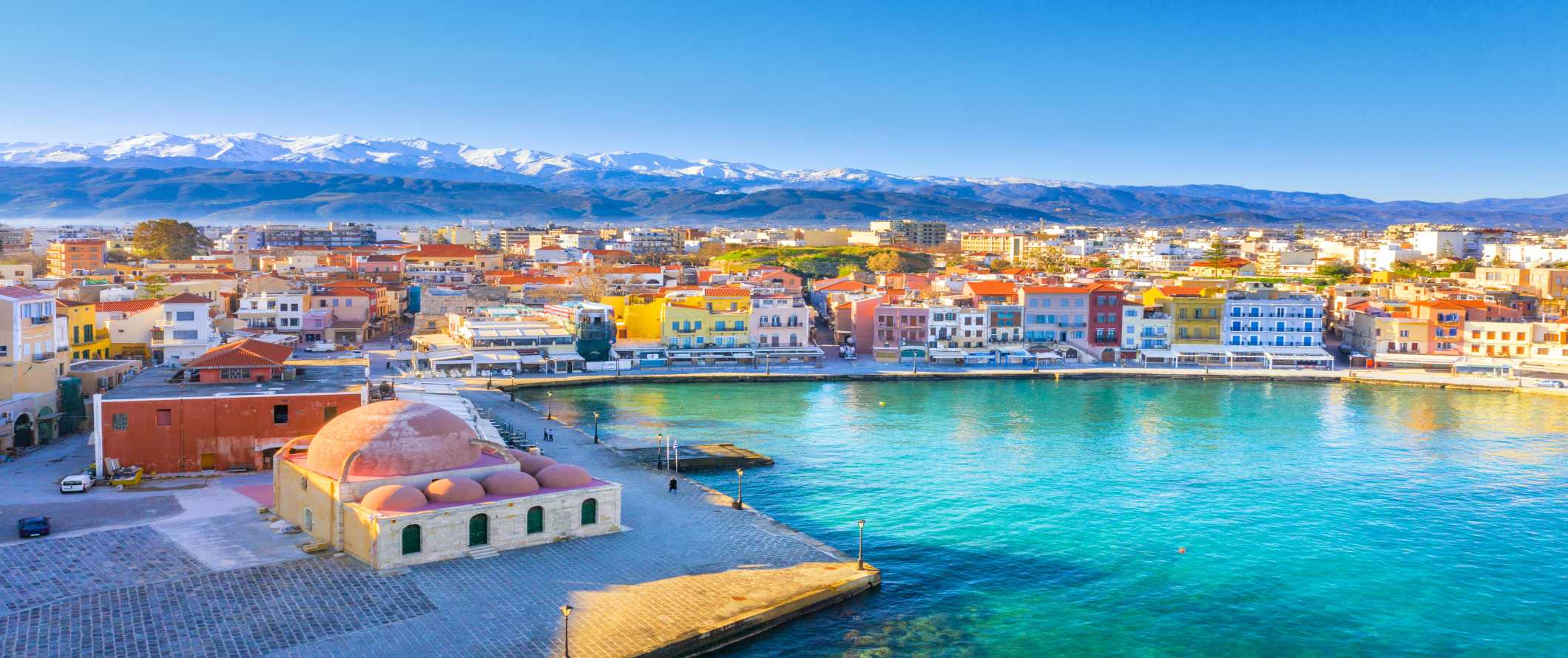
The island of Crete has an extensive, important history. It was once home to the ancient Minoan civilization, a Bronze Age civilization that predated even the Greeks. Growing up, I was fascinated by the Minoans – I even did a special history report on them in 9th grade! Visiting Crete always held a special place in my heart.
When I finally got to Crete, it exceeded all my expectations. There’s a lot to love about Crete beyond its ancient ruins: a beautiful variety of stunning beaches, excellent hiking, quaint historic towns, and incredible food and wine.
Plus, it’s affordable, making it an excellent budget destination to visit. And the island’s size ensures you can explore freely and escape the crowds that flock here during the busy summer months.
This travel guide to Crete can help you plan the perfect visit to this ancient island and ensure you save money in the process!
Click Here for City Guides
Top 5 Things to See and Do in Crete

1. Visit the Archaeological Museum of Heraklion
This is Greece’s second-largest archaeological museum. The collection here spans over 5,500 years of history. The museum houses elaborate pottery, jewelry, sarcophagi, colorful frescoes from Knossos, and more. Its Minoan collection is the most extensive in the world. Highlights include the Tripartite Shrine Fresco from around 1500 BC, Winged Cupid figurines dating back to the second century BC, and a luxury gaming board from around 1600 BC. Overall, the museum is incredibly detailed and should not be missed. Tickets are 12 EUR in the summer and 6 EUR in the winter.
2. Relax on the Pink Beach
Elafonisi Beach is located in the southwest corner of Crete, about 75 kilometers (47 miles) from Chania. The waters are crystal clear and the beach has rose-colored sand (hence the name). It is super popular in the summer (so get here early), with rentable sunbeds and umbrellas lining the beach. There are plenty of secluded coves nearby if you want to get away from the crowds. The water is shallow enough that you can walk out to the small island of Elafonisi, which has a tiny lighthouse and unobstructed views of the Mediterranean.
3. Explore Chania
This area has been inhabited since Neolithic times and was a major Minoan settlement named Kydonia. Today, Chania is the second-largest city in Crete and has a scenic Venetian quarter and harbor front lined with tavernas (small Greek restaurants), cafes, and shops. In the Old Town, you can watch the skilled artisans making boots or Cretan knives using traditional methods. The Egyptian lighthouse was between 1595-1601 by the Venetians and still stands in the old port. The municipal market is full of Cretan products for you to explore, from food to handicrafts. While here, check out the historic Firka Fortress (built in 1620) as well as the Maritime Museum located inside the fortress.
4. Visit Knossos
Knossos was the ancient capital of the Minoan empire and its Bronze Age ruins are some of the oldest in Greece (it’s considered the oldest city in Europe). The area has been inhabited since at least 7000 BCE, flourishing between the 19th-14th centuries BCE. You need a few hours here to roam the rebuilt palaces, courtyards, private apartments, baths, villas, tombs, and more. This is where the first artifacts with one of the earliest forms of writing known to humans was found. You’ll see some of these on display in the museum, along with sculptures, pottery, and art from the Minoan civilization. Admission to the archeological site is 18 EUR (free admission on the first Sunday of every month during the winter). A combined ticket for the site and museum (which you must visit!) is 25 EUR.
5. Hike Samaria Gorge
Samaria Gorge is one of Greece’s National Parks and a UNESCO World Biosphere Reserve. The main hike is a 16-kilometer (10-mile) trek that offers wonderful views of the White Mountains and finishes at the beach town of Agia Roumeli. Keep in mind that this is a fairly long, rocky trek that takes around 5-7 hours to complete. Because of the length of the trek, you aren’t allowed to start it after around 2pm (you can still do part of it, but you will have to turn around at a certain point). But for nature lovers, it’s well worth it, and you can grab a beer at one of the seaside tavernas when finished. Try to avoid mid-summer as temps can reach up to 40°C (104°F) and there’s no shade. The park is open May-October and admission is 5 EUR.
Other Things to See and Do in Crete
1. Take a trip to Spinalonga Island
Located in northeastern Crete, the Venetians built a large fortress here in 1579 to protect Mirabello Bay and Elounda Bay from the Ottomans. The defenses held strong until 1715 when the Ottomans sieged the island. When the Ottomans left in the late 19th century, the island became a leper colony and remained that way for decades. Visitors can now take a boat there and walk a short trail that takes you through the ruined church, a leper disinfection room, a hospital, and a cemetery. Admission is 8 EUR and it’s open from April-October.
2. Explore Koules Fortress
Located in Heraklion, Koules Fortress was built in the 13th century when Crete was under Venetian rule. It was designed to protect the city from invasion and at its height housed a mill, bakery, prison, barracks, and more. Nowadays, you can walk through the tunnels and visit the various rooms. There are a lot of informative exhibits explaining the history of the castle and area too. Admission is 4 EUR (closed on Tuesdays).
3. Visit Aptera
This ancient 12th-century monastery is located just 13 kilometers (8 miles) outside of Chania. During your visit, you can admire the restored monastery as well as the remains of the original fortified tower, a temple from the 5th century BCE, a city gate, monastic walls, Roman cisterns and baths, and an amphitheater. There was also a Turkish fortress built here in 1872 that overlooks Souda Bay. Admission is 4 EUR.
4. See the Lassithi Plateau
The Lassithi Plateau in eastern Crete stands 900 meters (2,952 feet) above sea level. To get there, you have to drive up winding mountain roads overlooking the Dikti mountain range (which is dotted with white windmills). While here, you can visit Psychro, home to the Dikteon Cave that, according to Greek mythology, is the birthplace of Zeus and the place where he was hidden as an infant to be protected from his father. It’s 6 EUR to visit the cave, or you can combine it with a full-day ATV experience across the plateau for 60 EUR.
5. Wander Rethymnon
Located in northwestern Crete, this city is the third-largest in Crete (after Heraklion and Chania). Rethymnon is famous for its spectacular 11-kilometer (7-mile) long beach as well as its Venetian old town, port, and fortress. Make a stop at the Rimondi Fountain in Petychaki Square to admire the Venetian architecture and drink from the historic fountain. The Venetian Loggia is a 16th century building in the Old Town where Venetian noblemen used to meet and is now the gift shop for the town’s Archeological Museum. I love getting lost in the streets here, exploring the 16th-century fortress, and eating all the tasty food the city has to offer. It has a phenomenal food scene!
6. Tour the Historical Museum of Crete
If you’re interested in the more modern history of Crete (from the early Christian period to the mid-20th century), this museum in Heraklion is awesome. It’s small, but there’s a lot to see, including two stunning paintings by El Greco: The Baptism of Christ and View of Mt. Sinai and the Monastery of St. Catherine. There’s also a giant model of the city from the Venetian era (around 1650 CE) before its Turkish occupation, and a re-creation of author Nikos Kazantzakis’s study where he wrote Zorba the Greek (a popular novel-turned-film written in 1946). Admission is 8 EUR.
7. Hit Balos Beach
Balos Beach in the northwest corner of Crete offers a nice mix of white and pink sand, as well as a lagoon that is a warm place for a swim. It’s a peaceful place to hang out and soak up the sun, though it does get very crowded in the summer as it is one of the most popular beaches on Crete. You can get here by car (and then hike down to the beach), ferry (though it doesn’t leave a lot of time at the beach), or private boat. There are no places to buy food here so bring your own.
8. Take a wine tour
Crete is one of the oldest wine-producing areas in Europe, with a history that dates back 4,000 years. There are some 30 wineries around the island and you can explore many of them as day trips from Chania or Heraklion. If you don’t have a car, there are several wine tours that leave from both cities, including Chania Wine Tours and Made in Crete (Heraklion). Both offer dedicated wine tours as well as wine and olive oil tours. Tours start from 90 EUR per person.
9. Wander Chrissi Island
Located 15 kilometers (9 miles) off the coast of southeastern Crete, this Caribbean-looking island is a protected nature reserve with a unique cedar forest covering most of the island. Its deep blue waters and white sand beach make it a popular spot to spend the day, snorkeling, swimming, and lounging around. Ferries leave from the mainland in the morning and come back starting around 3pm in the afternoon. The island is completely uninhabited, meaning that there are no services, so bring everything you need (though you can buy food and drinks on the ferries if you need to). The round-trip ferry costs around 26 EUR.
10. Visit Plakias
Located 30 kilometers (19 miles) south of Rethymno in the southern part of the island, this little town is popular with older tourists looking for a quiet time. I don’t really love the beach here (too rocky for me) but there are some phenomenal sunsets and a few nearby hikes that make it worth a visit. It’s a good base to visit nearby beaches (a boat taxi hops between a bunch of them).
11. Relax at Preveli Beach
Located close to Plakias, this beach is famous for its palm trees and swimmable river. It starts a few kilometers up and runs through a gorge before emptying out into the sea. Legend says the palm trees were brought here by pirates. It’s one of the nicer beaches and the river is super nice to swim in. You can sometimes hike through the gorge depending on trail and river conditions. Be sure to check beforehand. It’s a hugely popular day-trip destination so expect crowds.
12. Take a Cretan cooking class
Greek food is legendary, and after eating your way around the island, you might want to bring a taste of your trip home with you. By taking a cooking class, you can learn how to make uniquely Cretan dishes like dakos (a Cretan version of bruschetta), kalitsounia (sweet cheese pastries), and tsigariasto (a stewed meat dish). Vamos Village and Cretan Cooking Classes both offer a variety of classes starting at 75-80 EUR per person.
13. Visit a Cretan olive oil farm
Dive deep into the island’s olive oil tradition by visiting a farm and taking a tour to learn more about this iconic staple. The aptly named Cretan Olive Oil Farm and The Olive Farm in Chania both offer tours of the groves and production facilities, which also include tastings. Both farms also offer a variety of other classes and workshops, including wine tastings, cheese making, and other cooking classes. The self-guided tour at Cretan Oil Farm is only 5 EUR and includes a tasting but there are guided tours all over the island starting at 23 EUR.
How to Stay Safe in Crete
Crete is a very safe place to travel. Violent crime is rare and petty crime (like pick-pocketing) is your only real concern (and even that is uncommon). Keep your valuables close at tourist attractions and while on the beach and you should be fine.
If you’re driving, be extra cautious on Crete’s winding roads. Locals drivers can be erratic. Moreover, some of the roads are under-developed and there’s no real signage. Drive cautiously.
Solo female travelers should generally feel safe here. However, the standard safety precautions apply (never leave your drink unattended at the bar, never walk home alone intoxicated, etc.). There are many incredible solo female travel blogs on the web that can give you specific tips and advice about a place that I can’t.
If you’re going hiking, bring lots of water and always wear sunscreen and bring a hat too. It can get sweltering in the summer!
Scams here are rare, but if you’re worried about getting ripped off you can read about common travel scams to avoid here.
If you experience an emergency dial 112 for assistance.
Always trust your gut instinct. Make copies of your personal documents, including your passport and ID.
The most important piece of advice I can offer is to purchase good travel insurance. Travel insurance protects you against illness, injury, theft, and cancellations. It’s comprehensive protection in case anything goes wrong. I never go on a trip without it as I’ve had to use it many times in the past.
Where to Stay in Crete
Crete’s a big island and you’ll likely book a few different places if you’re planning on exploring the full extent of the island. Here are some of my recommended places to stay while you’re here:
Crete Travel Costs
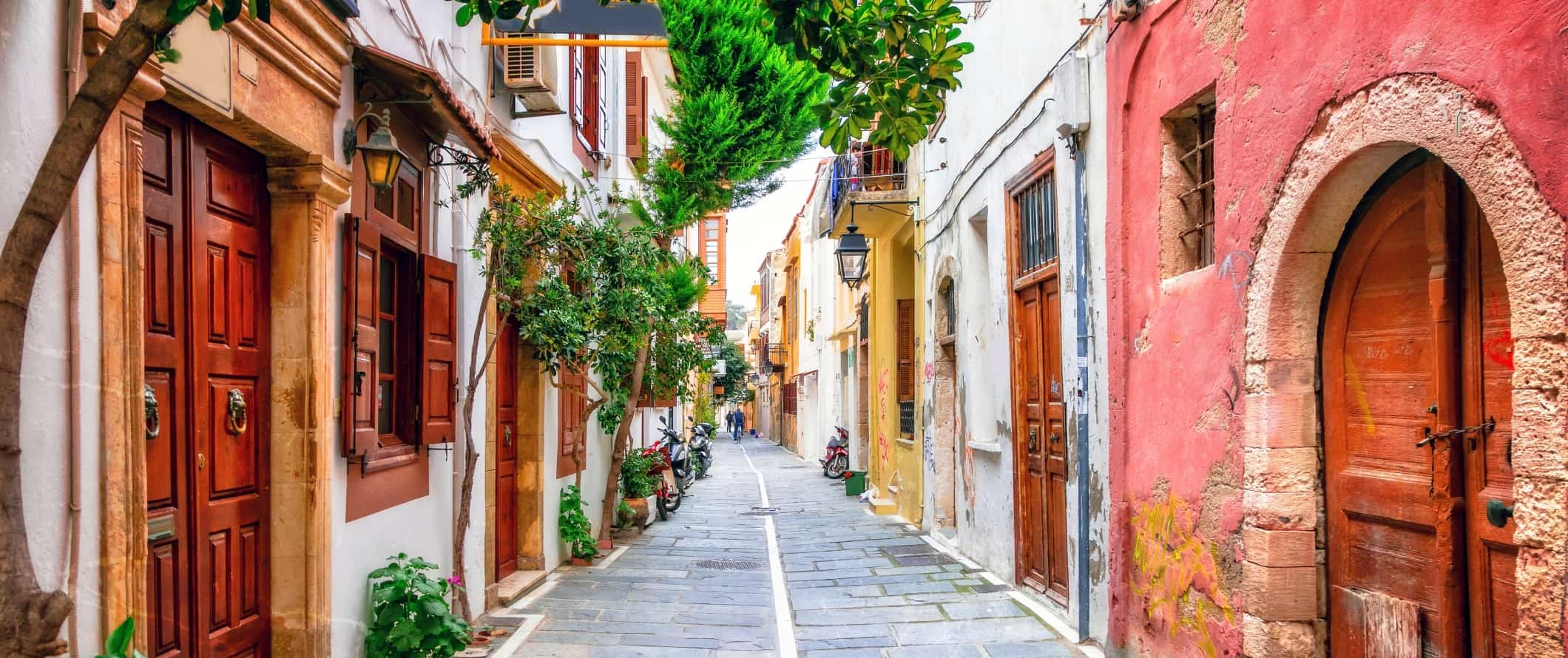
Accommodation
- Hostel Dorms – 19-33 EUR per night
- Hostel private rooms – 55-70 EUR per night
- Budget hotels – 20-35 EUR per night
- Airbnb private rooms – 40 EUR per night
- Airbnb apartments – 40 EUR per night
- Campsite – 12-14 EUR per night
Food
- Street food – 2-6 EUR
- Sit-down restaurants – 10-25 EUR
- Casual take-out places – 9-13 EUR
- Fast food (think McDonald’s) – 10 EUR
- Beer – 3.50 EUR
- Glass of wine – 4.50 EUR
- Cappuccino/latte- 4 EUR
- Bottled water – 1-2 EUR
- Groceries for a week – 45-50 EUR
Crete Suggested Budgets
Backpacker – 65 EUR Per Day
If you’re backpacking Crete, this budget covers staying in a hostel dorm, cooking some meals and eating some cheap fast food. You can save by limiting your drinking, taking public transportation to get around, and mostly doing free activities like hanging out on the beach and hiking.
Midrange – 135 EUR Per Day
On a mid-range budget, you can stay in a budget hotel, a private hostel room, or an Airbnb. You’ll be able to eat out for all your meals, take the occasional taxi, drink more, and do some paid activities like visiting the Archeological Museum and Knossos.
Upscale – 205 EUR Per Day
On a “luxury” budget, you can stay in a hotel, eat out anywhere you want, enjoy some drinks, rent a scooter, take more taxis, and do all the tours and activities you want. This is just the ground floor for luxury though. The sky is the limit!
Crete Travel Guide: Money-Saving Tips
Crete, like the rest of Greece, is very budget-friendly. You won’t blow your budget here unless you’re looking for only spas, resorts, and fine dining. Here are some of my favorite ways to save money in Crete:
- Use the Greek salad/bread rule – If the bread cover is .50 EUR or a Greek salad is less than 7 EUR, the restaurant is cheap. If the cover is around 1 EUR and a salad is 7-8.50 EUR, the prices are average. Anything more than that and the place is expensive. Use this rule to figure out how to eat at cheap restaurants.
- Redeem hotel points – Make sure you sign up for hotel credit cards and use those points when you travel. You’ll usually receive at least 1-2 nights free when you sight up, which really helps to lower your costs. This post will help you get started. You can start earning points today and have plenty for your trip.
- Travel in the off-season – Crete is one of the rare Greek islands that has a sizeable year-round tourist population, so hotels and attractions are almost always open (unlike places like Santorini and Mykonos). If you come during the shoulder season or off-season, you can find lower accommodation rates and tour prices while still getting the best of what the Greek islands have to offer.
- Stay with a local – If you plan ahead, you can usually find a Couchsurfing host that can host you for your stay. This way, you not only have a free place to stay but you’ll get access to a local that can share their insider tips and information. Just be sure to send your requests early as there are not a lot of hosts here.
- Go to museums on their free admission days – Most museums have some days when admission is free. Check the Odysseus Culture website for details as they vary from museum to museum.
- Bring a water bottle – The tap water here is safe to drink so bring a reusable water bottle to save money and reduce your plastic use. LifeStraw is my go-to brand as their bottles have built-in filters to ensure your water is always clean and safe.
- Eat super cheap – Gyros (and other street snacks) usually only cost a few euros. They are quick and easy and can keep you full for less than 15 EUR per day!
How to Get Around in Crete
Bus – Buses make up Crete’s only public transportation. You can search for bus routes and schedules on e-ktel.com or ktelherlas.gr. While buses around the heavily populated north coast of the island are frequent, buses to the south or southeast are often few and far between (and even less common during the low season). It makes it difficult to get around without a lot of planning.
Most buses cost between 4-10 EUR per trip. For example, a 90-minute trip from Heraklion to Rethymnon costs around 13 EUR, while a three-hour trip from Heraklion to Chania is about 20 EUR.
Boat – Some of the smaller islands off the coast of Crete, as well as certain coastal villages, are best accessed by boat. There are local ferries operated by Anendyk and tickets cost anywhere from 10-30 EUR depending on the route.
Scooter Rental – If you want more flexibility in getting around, a scooter rental is the way to go. They cost as little as 15 EUR per day. There are lots of rental companies, but I recommend Greenways.
Bicycle – Daily rentals start from about 20 EUR per day for a mountain bike or road bike but decrease the longer you rent them for. Joyride is an excellent company to rent from, though since scooter rentals are cheaper you might as well get one of them instead!
Taxi – Taxis in Crete charge about 1 EUR per kilometer and have a 4 EUR starting charge. There is usually a surcharge to and from the airport. In short, skip the taxis if you can as they add up!
Car rental – Car rentals can be found for as little as 25 EUR per day for a multi-day rental when booked in advance. Drivers must be at least 21 years old and have had their license for at least one year. An International Driving Permit (IDP) is required. For the best rental car deals, use Discover Cars.
Hitchhiking – Hitchhiking is pretty safe in Crete, though you are most likely to get a ride in the smaller villages where transportation is scarce and people are more likely to stop and help. Check out Hitchwiki for everything you need to know about hitchhiking in Crete.
When to Go to Crete
Crete has lovely weather year-round, with temperatures rarely dropping below 12°C (61°F) in the coldest months and averaging 26°C (79°F) daily during the summer.
May to the end of September are the busiest tourist months. This is when the beaches are full and prices are at their highest. Temperatures are warm, ranging from 26°-32°C (78°-90°F). There’s very little rain and lots of sun. That said, it’s a big island so there are always places here during peak season without crowds if you don’t mind getting off the beaten path.
If you want to avoid the crowds and inflated prices, come during the shoulder seasons (spring and autumn). October is a particularly nice time to visit, as the average daily temperature is still pleasant 21°C (69°F), and the crowds are virtually gone. The rain comes back in October, with around 6 or more days with rain, but it tapers off again in April, making May a great time to visit as well.
During the winter months, the temperatures are cool but still pleasant, ranging from 9°-16°C (48°-61°F). There’s plenty of rain, with ten or more days every month, so be sure to bring an umbrella if you visit during this time. The great part about this time of year is that crowds are nonexistent and prices are at their lowest.
Unlike other Greek islands, Crete has a large year-round population. While some businesses are seasonal, you won’t have any problem finding a place to stay, and most museums and attractions are open all year.
Crete Travel Guide: The Best Booking Resources
These are my favorite companies to use when I travel. They consistently have the best deals, offer world-class customer service and great value, and overall, are better than their competitors. They are the companies I use the most and are always the starting point in my search for travel deals.
- Skyscanner – Skyscanner is my favorite flight search engine. They search small websites and budget airlines that larger search sites tend to miss. They are hands down the number one place to start.
- Hostelworld – This is the best hostel accommodation site out there with the largest inventory, best search interface, and widest availability.
- Booking.com – The best all around booking site that constantly provides the cheapest and lowest rates. They have the widest selection of budget accommodation. In all my tests, they’ve always had the cheapest rates out of all the booking websites.
- HostelPass – This new card gives you up to 20% off hostels throughout Europe. It’s a great way to save money. They’re constantly adding new hostels too. I’ve always wanted something like this and glad it finallt exists.
- Get Your Guide – Get Your Guide is a huge online marketplace for tours and excursions. They have tons of tour options available in cities all around the world, including everything from cooking classes, walking tours, street art lessons, and more!
- The Man in Seat 61 – This website is the ultimate guide to train travel anywhere in the world. They have the most comprehensive information on routes, times, prices, and train conditions. If you are planning a long train journey or some epic train trip, consult this site.
- Trainline – When you’re ready to book your train tickets, use this site. It streamlines the process of booking trains around Europe.
- Rome2Rio – This website allows you to see how to get from point A to point B the best and cheapest way possible. It will give you all the bus, train, plane, or boat routes that can get you there as well as how much they cost.
- FlixBus – Flixbus has routes between 20 European countries with prices starting as low 5 EUR! Their buses include WiFi, electrical outlets, a free checked bag.
- SafetyWing – Safety Wing offers convenient and affordable plans tailored to digital nomads and long-term travelers. They have cheap monthly plans, great customer service, and an easy-to-use claims process that makes it perfect for those on the road.
- LifeStraw – My go-to company for reusable water bottles with built-in filters so you can ensure your drinking water is always clean and safe.
- Unbound Merino – They make lightweight, durable, easy-to-clean travel clothing.
- Top Travel Credit Cards – Points are the best way to cut down travel expenses. Here’s my favorite point earning credit cards so you can get free travel!
- Ferry Hopper – If you’re looking to book your ferries, this website is an easy way to search the various companies, piece together routes, and book your tickets.
GO DEEPER: Nomadic Matt’s In-Depth Budget Guide to Europe!
There’s a lot of free information online but do you want to spend days searching for information? Prob not! That’s why guidebooks exist.
While I have a lot of free tips on Europe, I also wrote an entire book that goes into great detail on everything you need to plan a trip here on a budget! You’ll get suggested itineraries, budgets, even more ways to save money, my favorite restaurants, prices, practical information (i.e. phone numbers, websites, prices, safety advice, etc etc), and cultural tips.
I’ll give the insider view of Europe that I got from years of traveling and living here! The downloadable guide can be used on your Kindle, iPad, phone, or computer so you can have it with you when you go.
Click here to learn more about my book on Europe!
Crete Travel Guide: Related Articles
Want more tips for your trip? Check out all the articles I’ve written on Greece travel and continue planning your trip:

